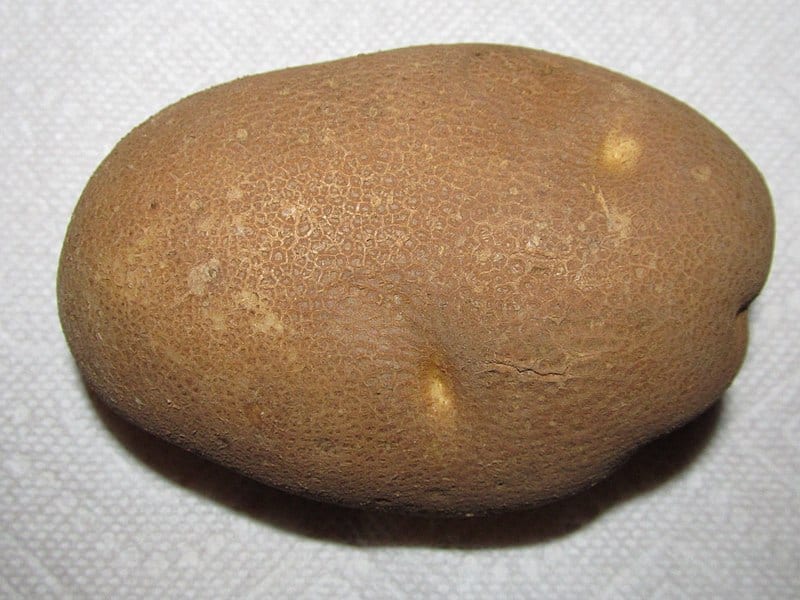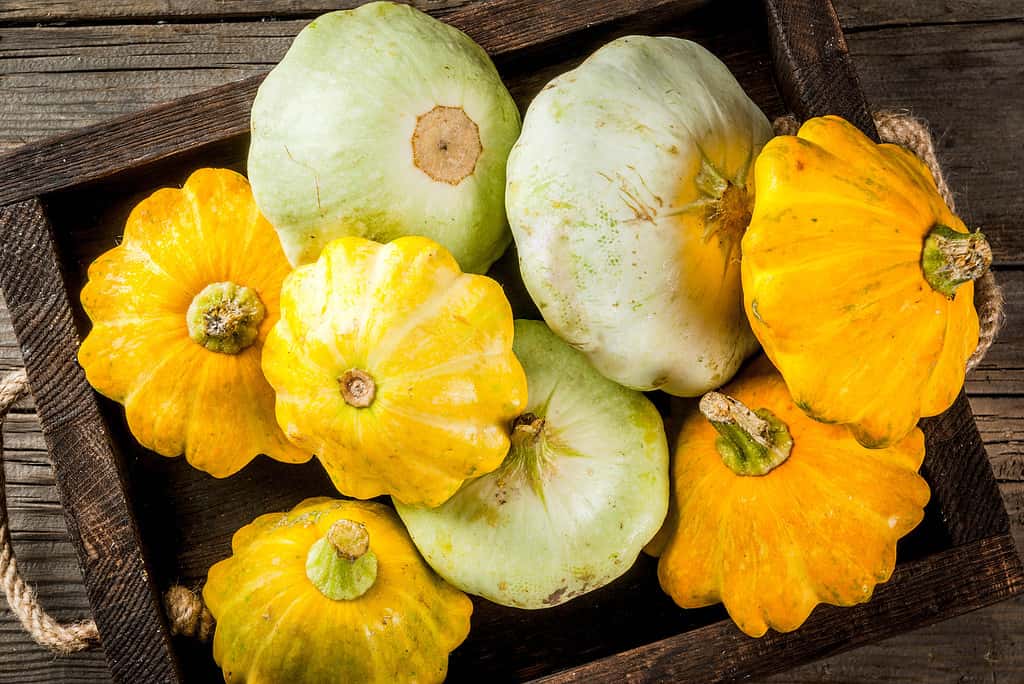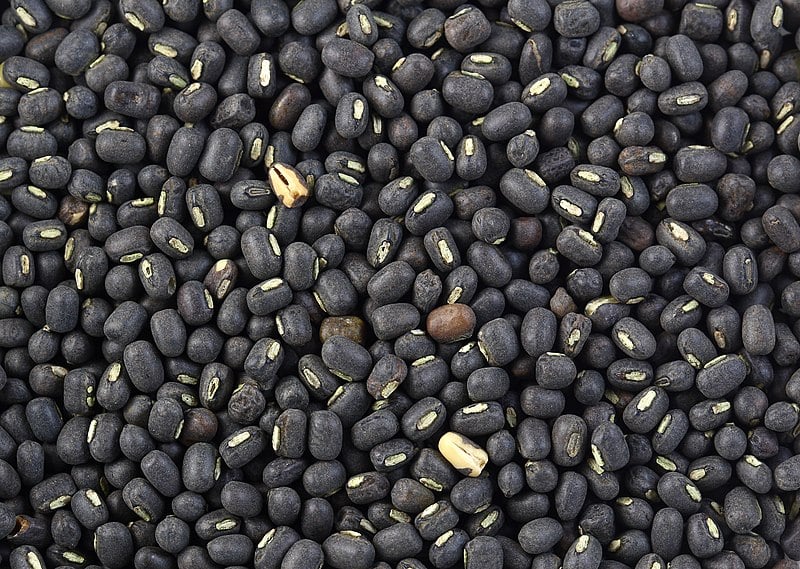When it comes to food, the culinary world is fortunate to have a wide range of cuisines, particularly when it comes to vegetables. Our menus often feature familiar produce, like carrots, spinach, broccoli, and mushrooms, that are good for traditional meals. However, there are other veggies hidden in plain sight that don’t always make it onto the menu. So, if you’re someone who appreciates flavorful food and wants to explore new tastes for your palate, then keep reading to learn about some vegetables that start with U.
1. Ube
The purple yam, also known as Ube, is a root vegetable that holds appeal, particularly in Southeast Asia and the Philippines. Its exterior displays a rough brownish texture and oval shape. However, Inside lies a deep shade of purple that retains its vibrancy after cooking. Once prepared, it takes on mild hints of sweetness and nuttiness in flavor.
Filipinos incorporate this unique veggie into a beloved dessert called ube halaya. Furthermore, Ube can also transform into a delectable purple yam ice cream. Beyond its taste, Ube offers benefits by providing fiber, vitamins, and antioxidants.
2.Udupi Mattu Gulla Eggplant
The Udupi Mattu Gulla Eggplant is a variety of eggplant that originates from Udupi, a region in Karnataka, India. Udupi eggplant is recognized for its green coloring and stout shape. Locals in India often use this ingredient in dishes called Gulla Sambhar and Gulla Palya. Additionally, farmers cultivate this eggplant using chemical-free methods, enhancing its taste and fostering a healthier farming approach.
One interesting aspect of this vegetable is its geographical Indication protection. It ensures that only eggplants grown in the village can be referred to as Udupi Mattu Gulla Eggplants.
3.Ulluco
Originating from the Andes region in South America, ulluco is a potato variant that produces an assortment of pink, yellow, and orange spuds. Balancing tanginess and earthiness in its flavor profile, this starchy vegetable boasts generous amounts of fiber, vitamins, and minerals. Beyond its culinary attributes, ulluco carries a reputation for reducing conditions like rheumatism and bronchial infections.
When cooked, ulluco undergoes an interesting transformation as its outer skin changes from a dull to a more vibrant hue. Moreover, it showcases resilience by thriving in challenging environments such as poor soil quality and freezing cold weather.

Ulluco reduces conditions like rheumatism and bronchial infections.
4.Ulster emblem potato
The Ulster Emblem Potato has a role in the culinary heritage of Northern Ireland. It is known for its unmarked smooth skin as well as its rounded shape, which enhances its visual appeal. One of the qualities it possesses is the creamy texture of its flesh, making it an ideal option for various cooking methods such as frying, boiling, and mashing.
In 2015, the Royal Mail chose the Ulster Emblem Potato to feature on a postage stamp, which gained it recognition. This acknowledgment serves to emphasize the historical significance of this type of potato.

Ulster emblem potato is ideal for frying, boiling, and mashing.
5.Umatilla Russet Potato
The Umatilla Russet Potato is home to the Pacific Northwest area of the United States. Culinarians favor this potato variety for its rustic appearance and dense texture. Its high starch content and low moisture levels make it ideal for achieving a crispy texture when frying mouthwatering fries and hash browns.
Did you know that Umatilla potatoes got their name from the Umatilla River? This is the river that passes through areas of Oregon and Washington. In fact, this is a common tradition for potato names to draw inspiration from landmarks and features.

The Umatilla potato is favored for its rustic appearance and dense texture.
©Willis Lam (Pest15) / CC BY-SA 2.0, Flickr – Original / License
6.Umbrella squash
The umbrella squash stems from the Andes region in South America. This summer squash features a yellow ribbed surface and offers a taste similar to zucchini or cucumber. As it grows, its leaves and vines extend outward, forming an umbrella shape. This type of squash can be eaten raw, sautéed, and even incorporated into stews and soups.
Additionally, this vegetable can thrive in conditions including both warm and cool climates. Because of this, it’s grown in different places to make sure there’s always fresh food for local communities.

This summer squash features a yellow ribbed surface and offers a taste similar to zucchini or cucumber.
©Rimma_Bondarenko/iStock via Getty Images
7.Umibudo
Umibudo is an intriguing vegetable found in Japan and various regions of Southeast Asia. Often harvested from shallow waters along the coast. Umibudo’s unique appearance and texture make it a popular delicacy in salads and sushi. When you eat Umibudo, it creates a popping sensation in your mouth, revealing a slightly salty and briny taste.
Umibudo grows incredibly quickly, with some types even expanding by two centimeters every day. Furthermore, these sea grapes are packed with essential vitamins and minerals, including calcium, magnesium, iron, and vitamins A and C.

When you eat Umibudo, it creates a popping sensation in your mouth.
8.Upland cress
Upland cress is a leafy vegetable that’s part of the mustard family. Developed in Europe and Asia, its produce is sometimes known as land cress or creasy greens. Its foliage carries a zesty flavor, similar to watercress. Because of its versatility, it’s a great supplement to salads, sandwiches, and toppings. Also, you can incorporate it into soups, stir-fries, and omelets.
Upland cress provides ample amounts of vitamins A and C, calcium, and iron. As this veggie ages, its peppery taste becomes stronger, adding extra zing for those who savor a bit of spiciness.
9.Urad bean
Urad bean, a type of legume, has a pronounced cultivation in India. With a black exterior and a white interior, locals cherish this petite bean for its authentic flavor and robust texture. Urad beans are a useful ingredient for delicious recipes in traditional Indian curries, hearty stews, and savory pancakes.
Urad beans have significance in Indian festivals and rituals. They symbolize prosperity and well-being, making them an essential element of celebrations. Furthermore, these small beans are helpful in farming too, as they can make the soil better by adding nitrogen. This means less need for fertilizers.

Urad beans have significance in Indian festivals and rituals.
10.Urfa Pepper
Originating from a region in Turkey, the Urfa pepper is renowned for its deep burgundy color and its unique smoky and earthy flavor. Once the Urfa pepper reaches maturity, it undergoes a method of sun drying before being ground into flakes or powder. In fact, this spicy delight pairs well with grilled meats, stews, and sauces, adding a pleasant level of heat.
In addition, to enhance the flavor of Urfa pepper, it is common to dry roast it in oil. This cooking technique intensifies its overall taste. Moreover, with the Scoville Heat Units of this pepper spanning from 7,000 to 15,000 (SHU), exercise caution when tasting this vegetable, especially if you’re not accustomed to consuming spicier foods.
List of Vegetables starting with a U
- Ube
- Udupi Mattu Gulla eggplant
- Ulluco
- Ulster emblem potato
- Umatilla russet potato
- Umbrella squash
- Umibudo
- Upland cress
- Urad bean
- Urfa pepper
The photo featured at the top of this post is © ESB Professional/Shutterstock.com
Thank you for reading! Have some feedback for us? Contact the AZ Animals editorial team.







